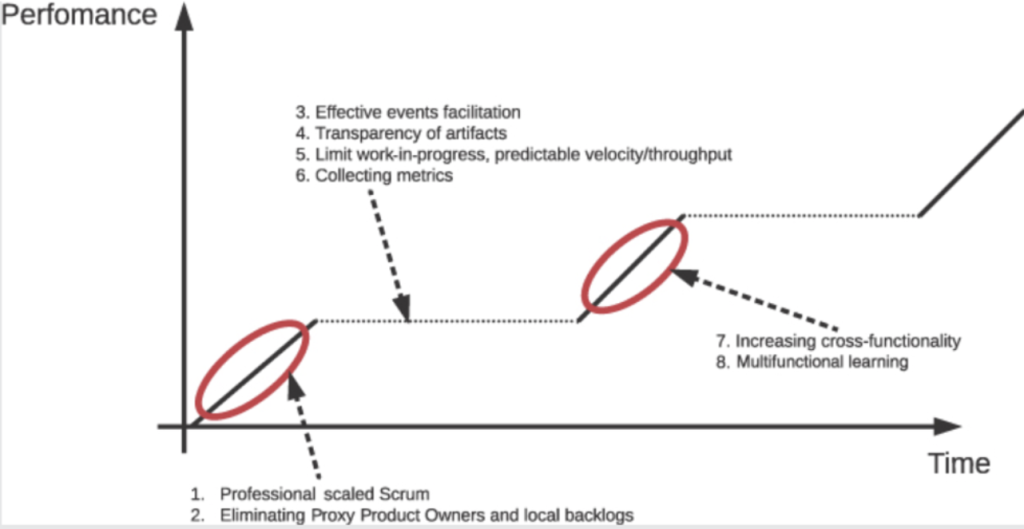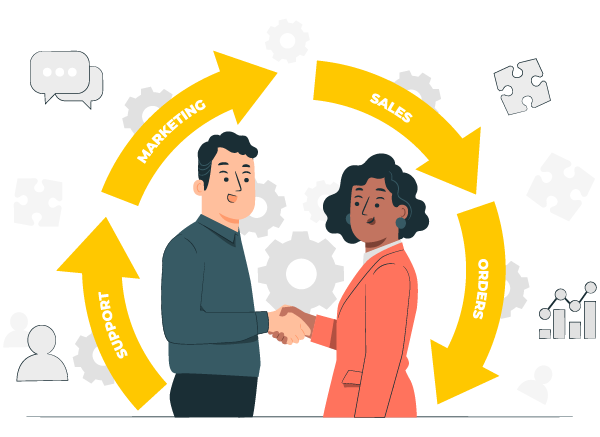
Are you ready to become a successful change agent? Let’s dive into the world of Coaching for Change!
As a change agent, it’s crucial to be equipped with the knowledge and skills of change management, including working with resistance. While there are plenty of books and research on the topic of change, we want to share with you our experiment-based guidelines for success. Through analyzing past failure and success stories, we have identified patterns that work and captured them as guidelines in the book. You can find five of these guidelines below.
Influence people
First and foremost, as a change agent, you need to influence people during a change initiative. But it’s not just about presenting good ideas or having snappy presentations. You must establish a human connection with those you are trying to influence, understand their personal needs, and identify their ingrained habits. By using various techniques such as “Corridor Politics” and building rapport with individuals, you can convert connectors into supporters and use their social influence to spread the message of change more widely. But don’t stop there! Expand your social circle by communicating with a broad range of people beyond your immediate colleagues and become a social connector yourself.
Co-creation
The next guideline for successful change is co-creation. Involving everyone in co-creating the change with you is crucial for increasing the success of organizational change. This means inviting everyone to share their ideas, hopes, and dreams. When people actively participate from the start and their feedback is used to improve the solution, resistance is lower and adoption is higher. For example, we helped a company with Agile adoption by inviting the entire office to a series of workshops. Through facilitated sessions, we defined metrics of Agile adoption, identified optimizing goals, and created a shared understanding of organizational design and processes. By involving everyone in this process, we were able to create buy-in from the teams and increase their intrinsic motivation.
To facilitate co-creation, you can use three methods: facilitated sessions, surveys, and instant feedback techniques. But be careful with surveys as it’s easy to fall into self-deception and get bad data.
Voluntary participation
Let’s dive into the details of the importance of voluntary participation in Agile transformation.

Agile approaches often require new behaviors and mindsets that many people may not be familiar with. Simply mandating participation in Agile initiatives can lead to disengagement, failed change initiatives, and even employee turnover. Therefore, it’s essential to get the right people on board who are willing to support Agile/Scrum values or at least willing to give it a try. These are the individuals who are most likely to contribute positively to the change effort and help spread enthusiasm across the organization.
Voluntary participation means that everyone playing the game must willingly accept the goal, rules, and feedback. For example, in the case of Scrum, voluntary participation would mean accepting the goal of delivering the highest value during each Sprint and conforming to the rules of the game as described in the Scrum Guide. Actively participating in Scrum events for inspection and adaptation and conforming to Scrum values are also essential. By emphasizing voluntary participation, organizations can increase buy-in and motivation among their employees, which is essential for success in Agile transformation.
Acknowledge the loss
However, it’s important to recognize that change can be difficult, and people may experience resistance and discomfort as they transition to new ways of working. One way to prepare for this is to acknowledge the loss that may come with the change. When people are facing a change, they often hold on to the past because there’s something they value. By asking questions such as “Does the change involve a change in your identity?” and “Will your familiar routines change? Will any relationships change or suffer?” you can better understand what people are losing and provide support to those affected during the transition.
It’s also crucial to be aware of the loss aversion bias, which makes people feel the pain of loss twice as intensely as the pleasure of gain. This bias can lead individuals and organizations to resist change and stick to the status quo. To avoid this bias, organizations can try imagining the worst-case scenario and create risk mitigation strategies together with the teams. This approach can help decrease the fear of the unknown and enable people to accept a more rational decision.
Find the balance between incremental and radical change
Finally, finding the right balance between radical and incremental change is critical. Incremental change is necessary to allow individuals and organizations to absorb change and make new processes and rules habitual, but only taking incremental steps can lead to organizations landing at a local optimum. On the other hand, radical changes are needed to break out of these local optima and move to a new status quo. By creating a change roadmap that includes both types of change and the speed of introducing changes on a timeline, organizations can create a plan that is realistic and achievable.

In summary
Voluntary participation, acknowledging loss, and finding the right balance between radical and incremental change are crucial components of successful Agile transformation. By focusing on these elements, organizations can increase employee buy-in, mitigate resistance to change, and create a sustainable path towards a more Agile way of working.








